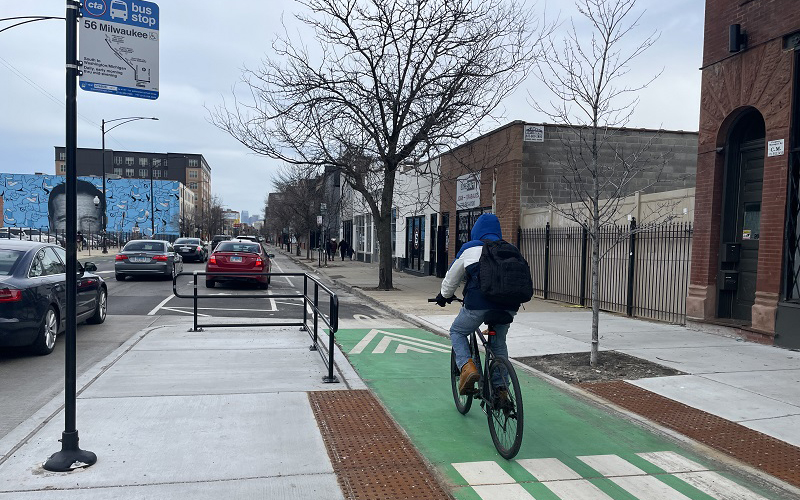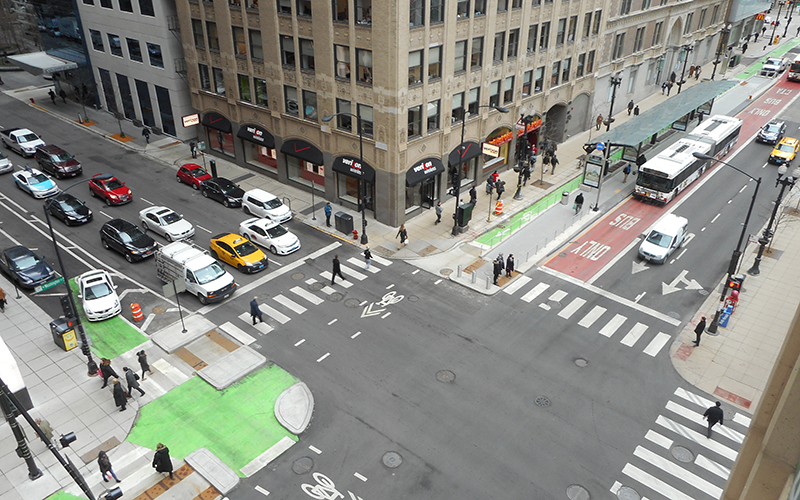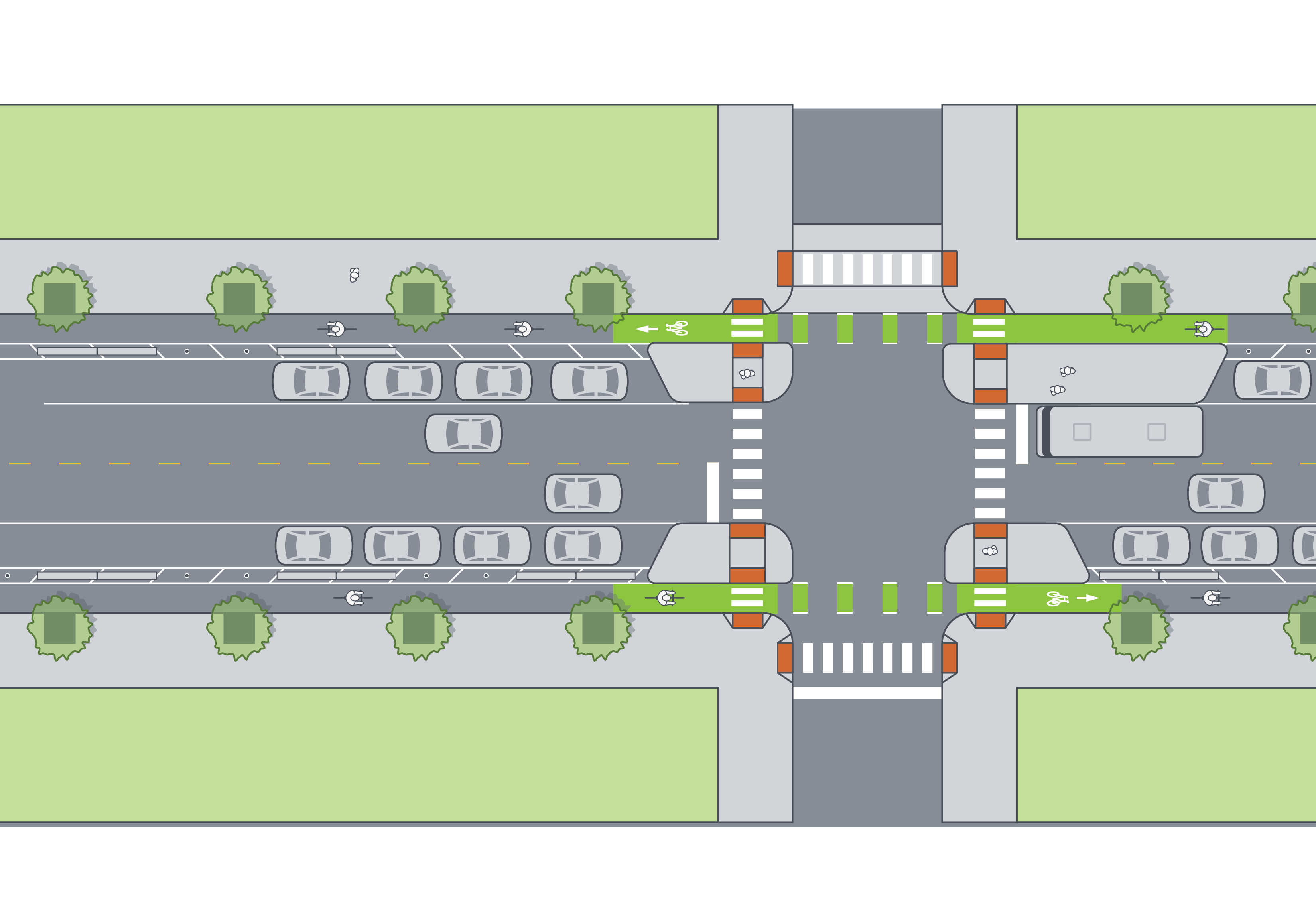Bus Boarding Islands
 Bus Boarding Islands
Bus Boarding Islands


How it Works
Bus boarding islands are exclusive spaces for people awaiting, boarding, and alighting public buses. Unlike a traditional bus stop, a boarding island is installed in between a vehicle travel lane on one side and a protected bikeway on the other side, with a short crosswalk for bus riders to cross the bikeway for sidewalk access. CDOT works closely with CTA to develop a variety of bus boarding island designs which enhance bus operations and eliminate bus-bike conflicts at bus stops.
Benefits of Bus Boarding Islands
- Streamlines transit travel and saves time, as buses won't need to merge in and out of traffic or cross over bikeways at service stops
- Gives bus riders a more comfortable, dedicated space for boarding and alighting
- Prevents hazardous, illegal parking in curbside bus stops which can force passengers to alight into active travel lanes or bikeways
- Reduces crossing distance for people walking
Where to Find It
Bus boarding islands are now a regular feature of complete streets projects, with over 120 installed by the end of 2024.

North Milwaukee Avenue

West Washington Street

